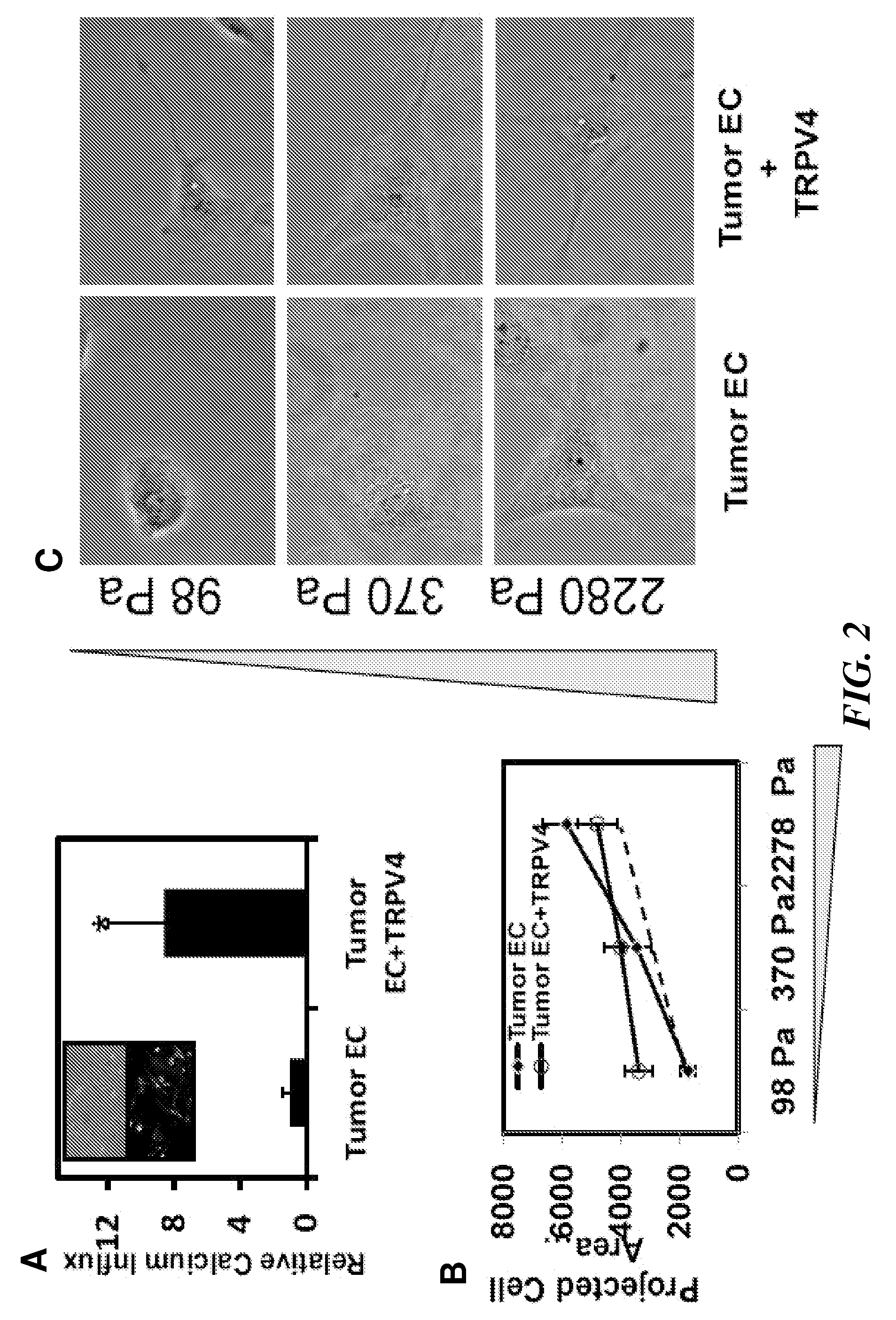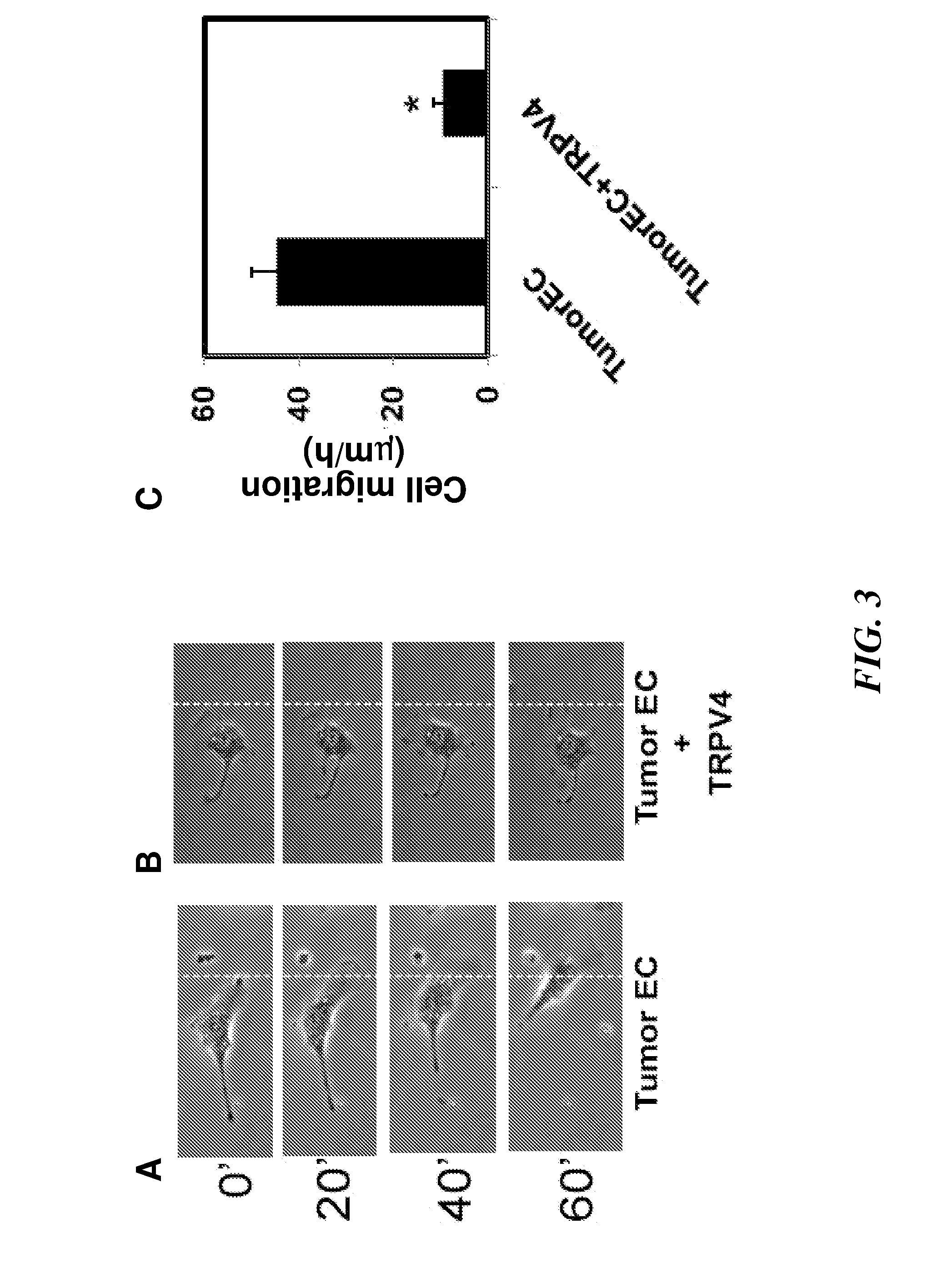Improving efficacy of cancer therapy
a cancer therapy and cancer technology, applied in the field of improving the efficacy of cancer therapy, can solve the problems of affecting the blood flow rate, the therapeutic effective amount of anti-cancer therapy cannot reach, and the irregular network and “leaky” blood vessels, so as to achieve the effect of more cell death
- Summary
- Abstract
- Description
- Claims
- Application Information
AI Technical Summary
Benefits of technology
Problems solved by technology
Method used
Image
Examples
example
Materials and Methods
[0173]Cell Culture. Tumor endothelial cells (EC) cells were isolated from transgenic TRAMP mice bearing prostate adenocarcinoma. Because it is difficult to obtain sufficient quantities of EC cells from the normal mouse prostate (due to its small size), normal EC that were isolated from the dermis (MDEC cells) of TRAMP mice were used instead. Normal EC cells from human dermis (HDEC cells; Cambrex) and an established mouse pancreatic EC cell line (MS1-EC cells; gift of Judah Folkman) served as independent non-tumor EC cell controls. Tumor EC cells, MDEC, and MS1-EC cells were cultured on Fibronectin-coated tissue culture dishes and grown in culture medium composed of low glucose DMEM, 10% FBS, 10% Nu Serum IV, basic fibroblast growth factor (6 ng / ml), heparin salt (0.1 mg / ml), 1% insulin-transferrin-selenium, and an antibiotic / mycotic mixture. These cells were used between passages 10-19. HDEC cells were grown on tissue culture dishes in medium as per manufacturer...
PUM
| Property | Measurement | Unit |
|---|---|---|
| emission wavelength | aaaaa | aaaaa |
| excitation wavelengths | aaaaa | aaaaa |
| excitation wavelengths | aaaaa | aaaaa |
Abstract
Description
Claims
Application Information
 Login to View More
Login to View More - R&D
- Intellectual Property
- Life Sciences
- Materials
- Tech Scout
- Unparalleled Data Quality
- Higher Quality Content
- 60% Fewer Hallucinations
Browse by: Latest US Patents, China's latest patents, Technical Efficacy Thesaurus, Application Domain, Technology Topic, Popular Technical Reports.
© 2025 PatSnap. All rights reserved.Legal|Privacy policy|Modern Slavery Act Transparency Statement|Sitemap|About US| Contact US: help@patsnap.com



